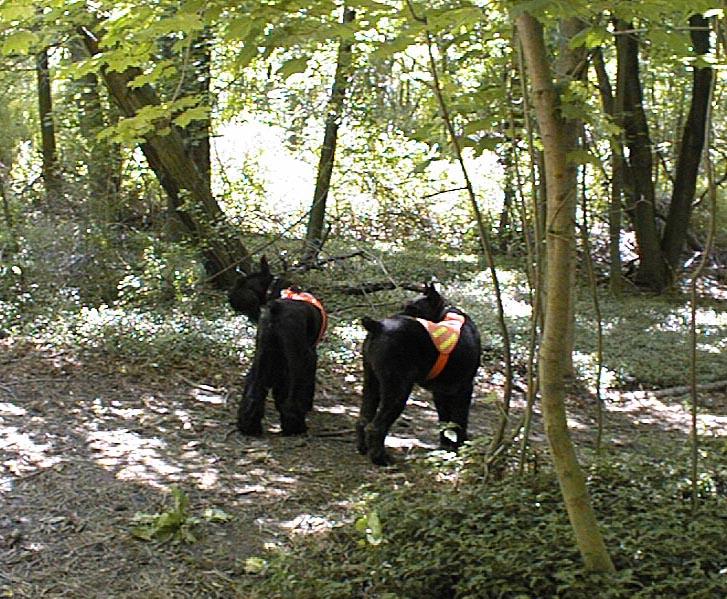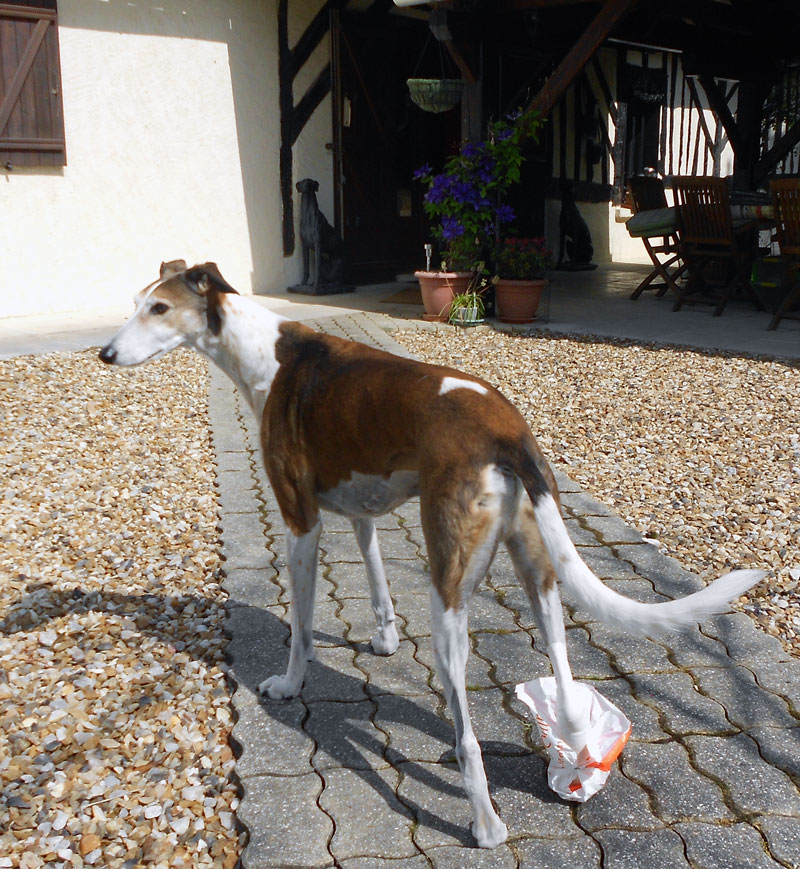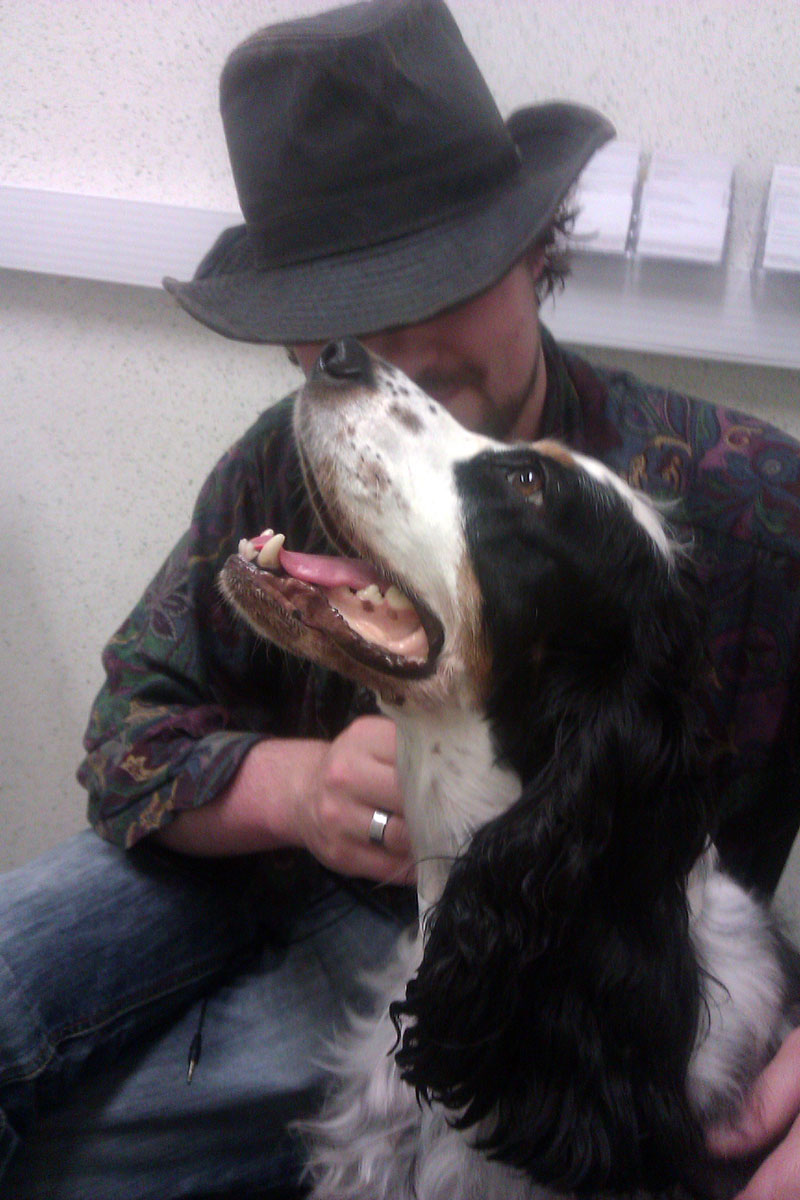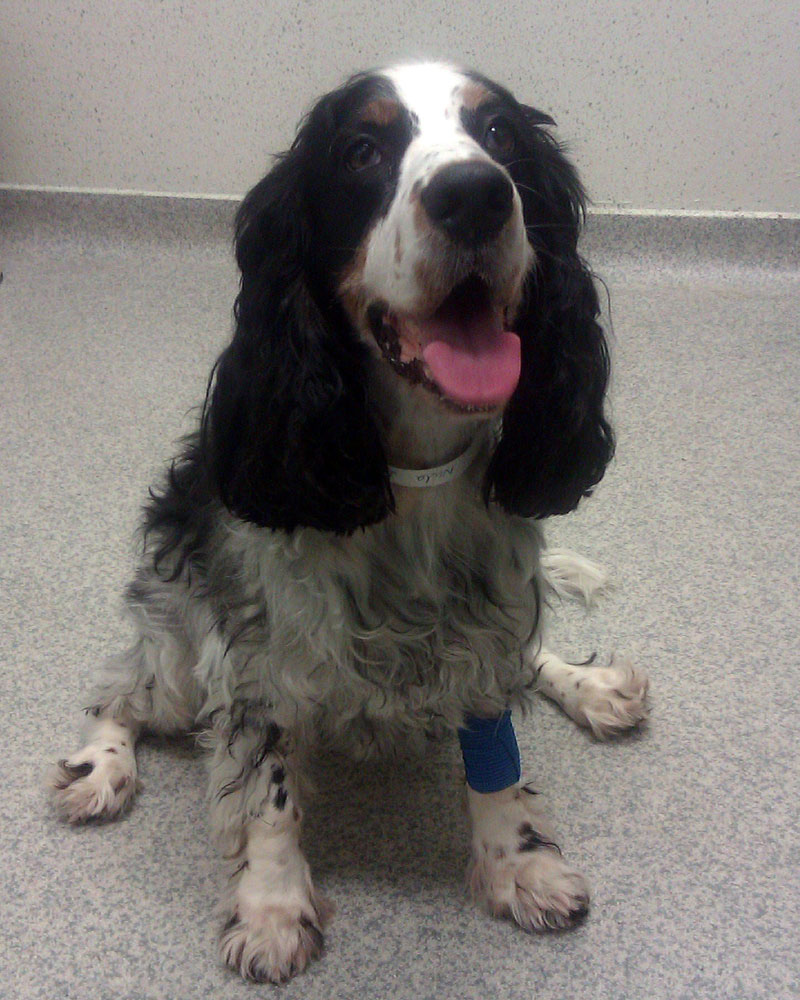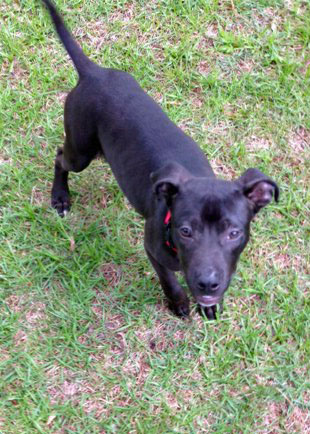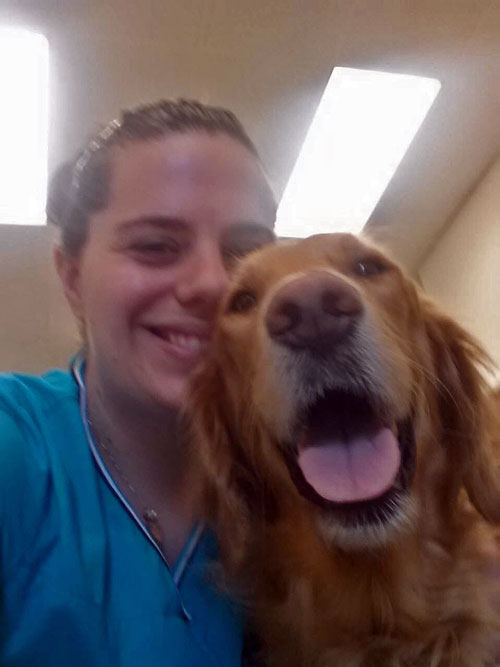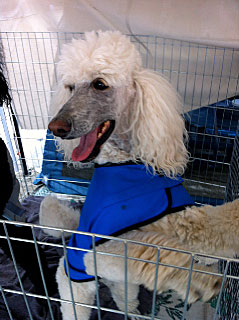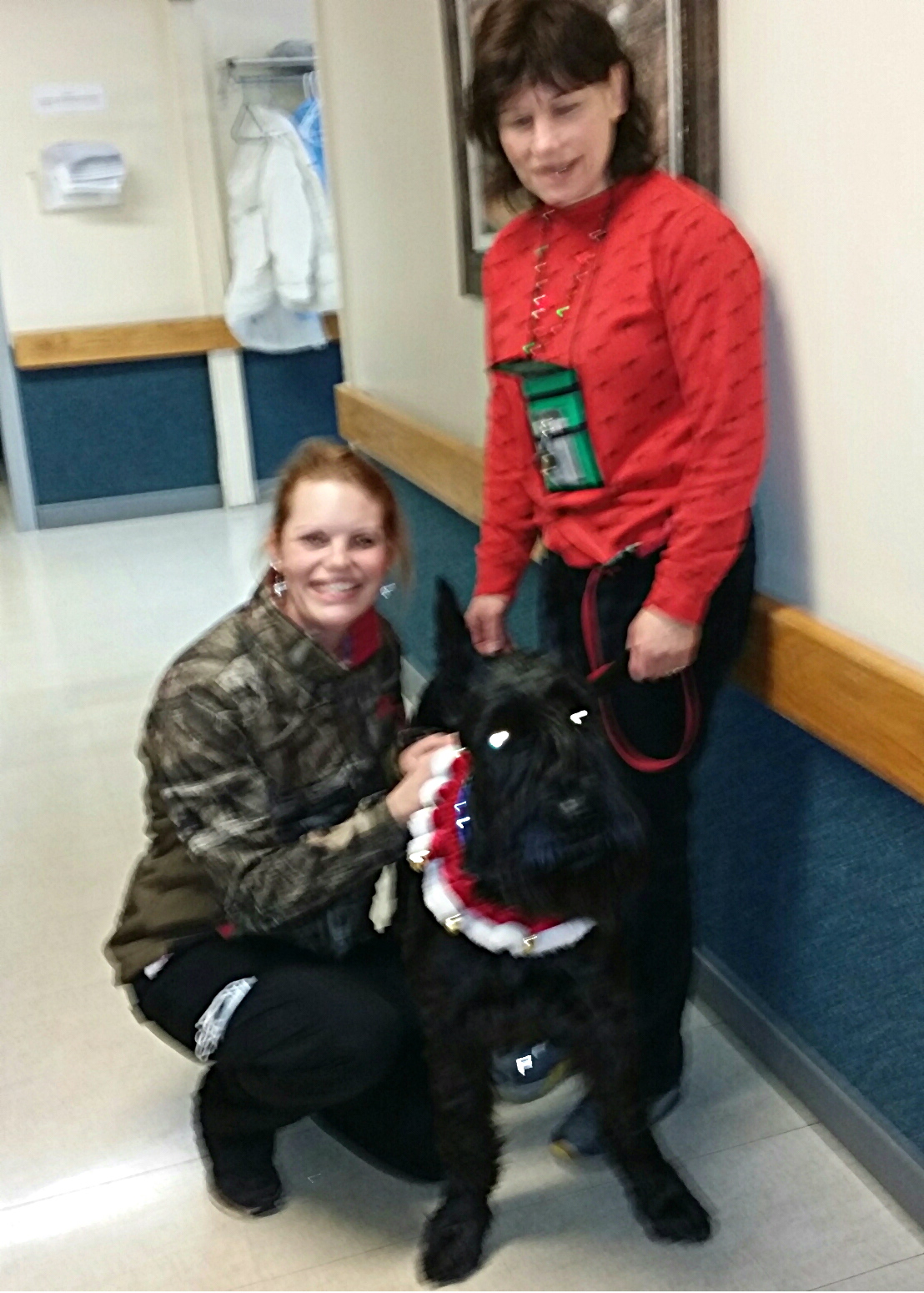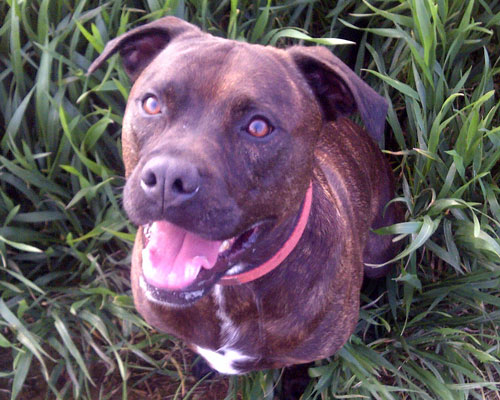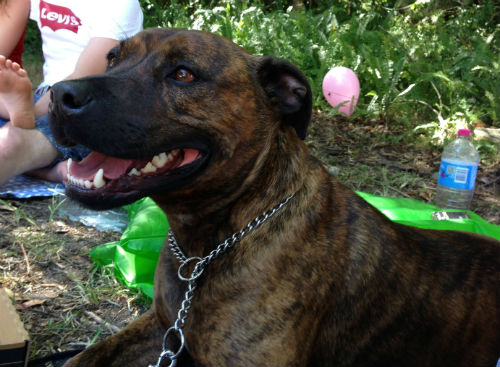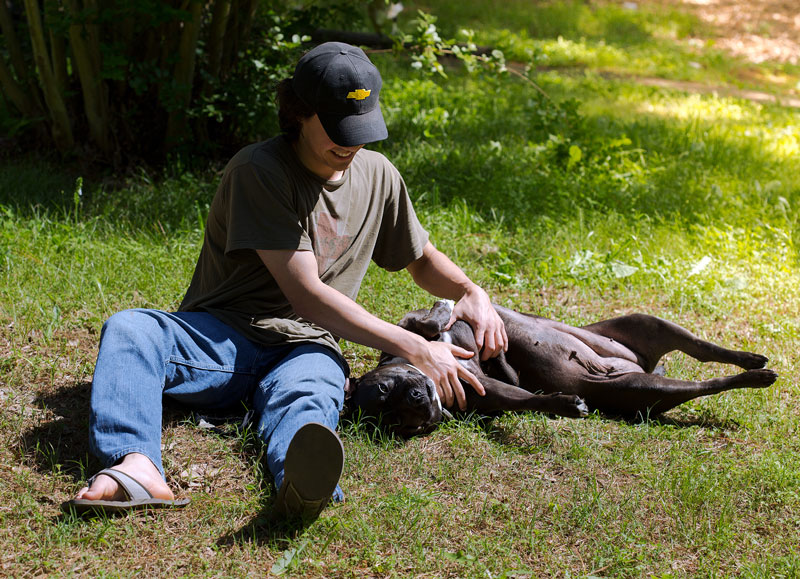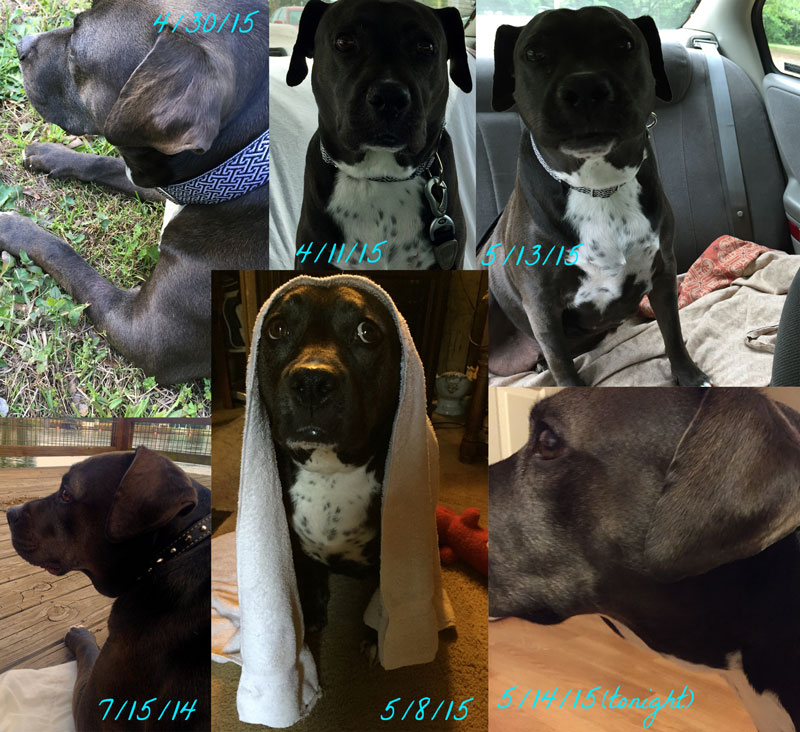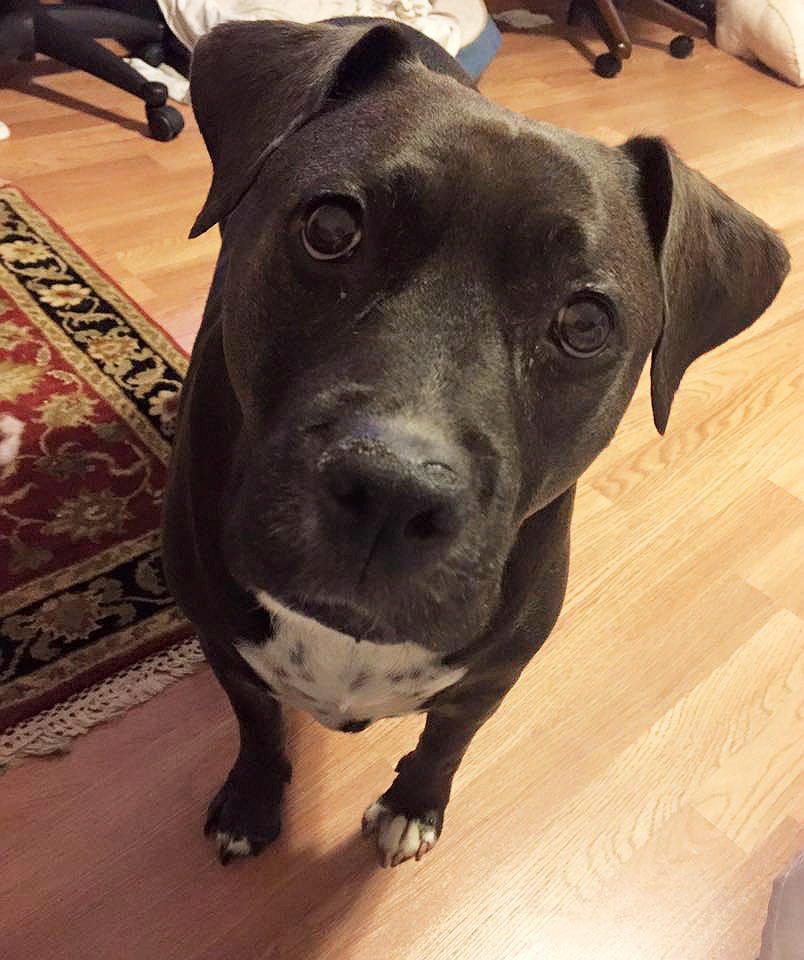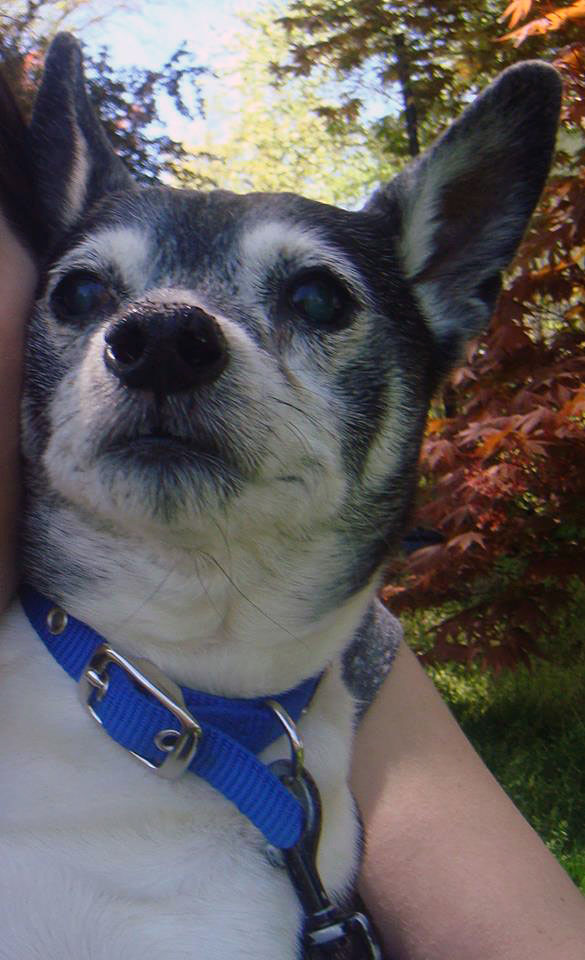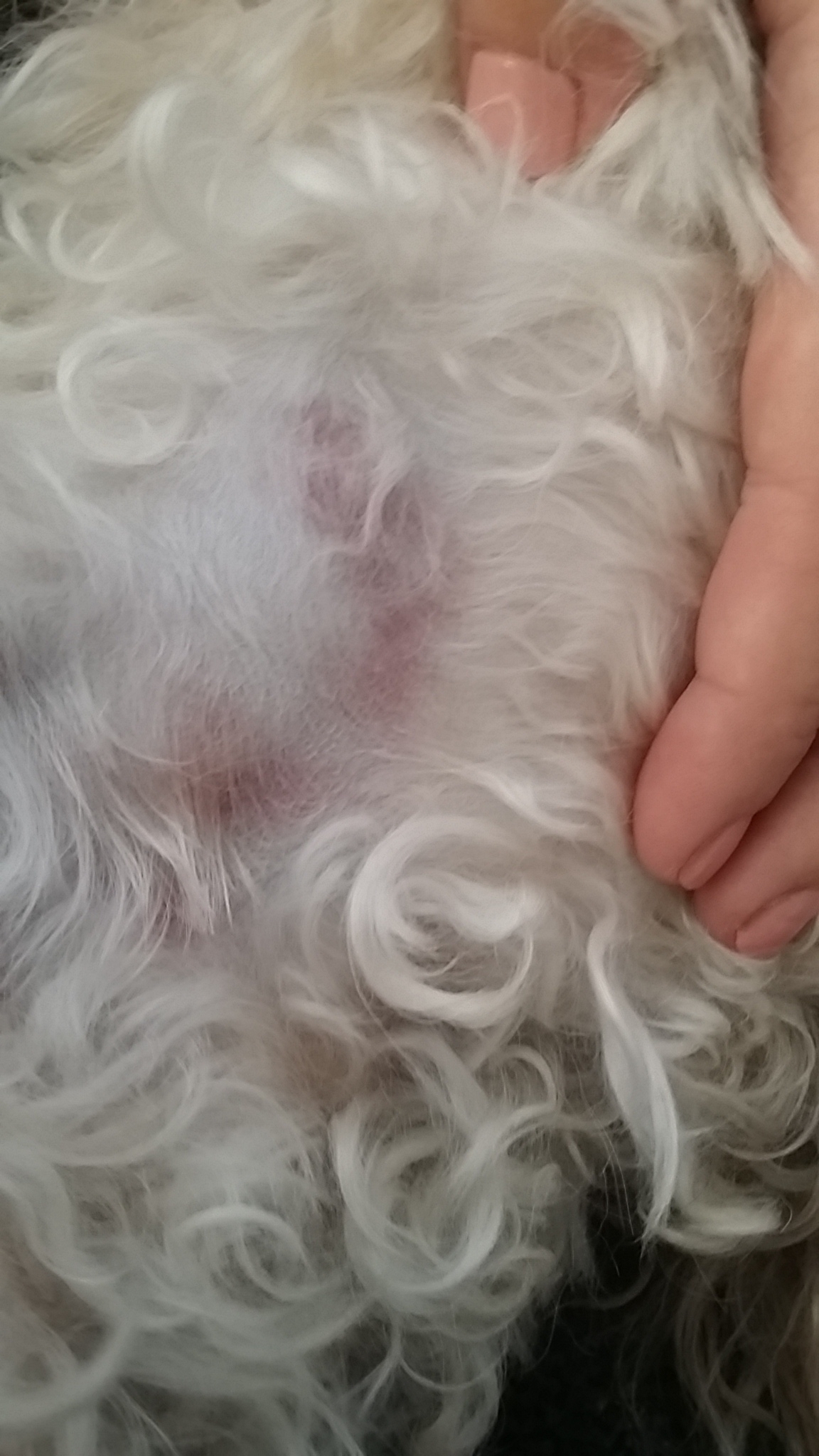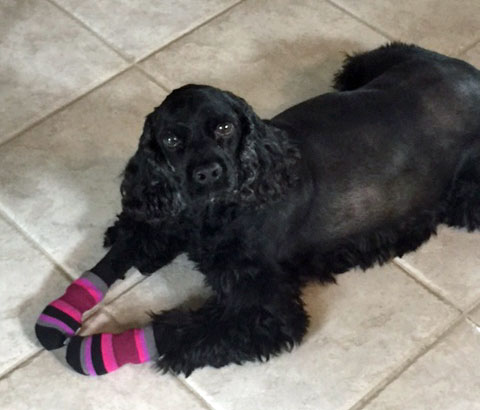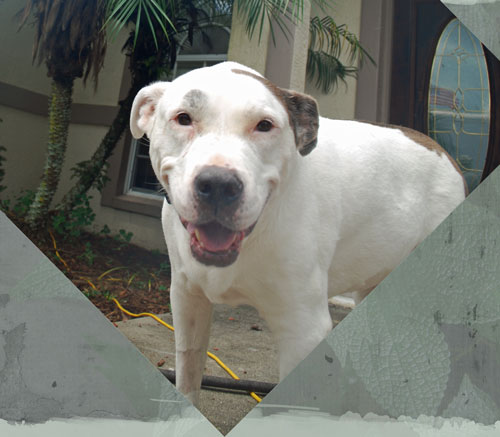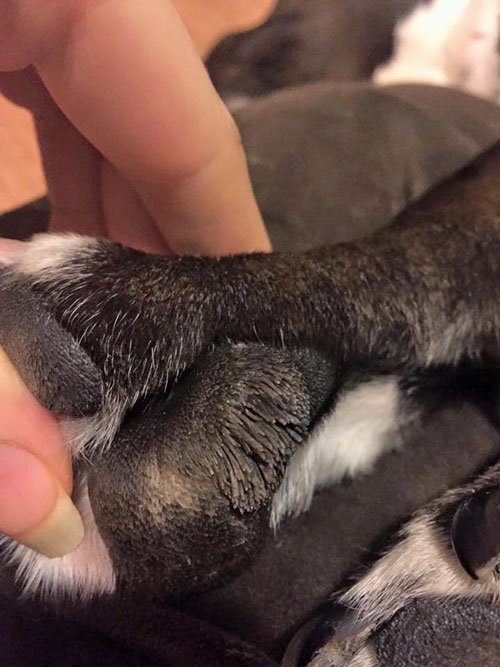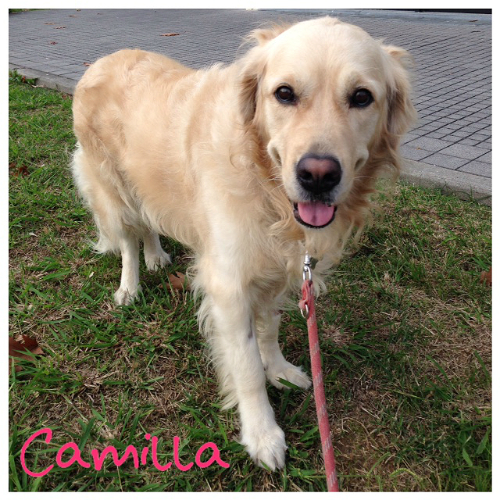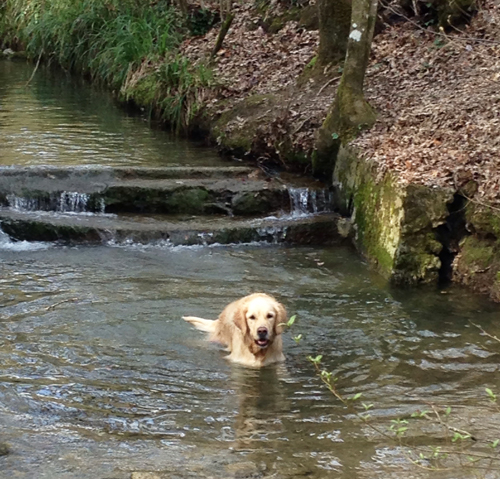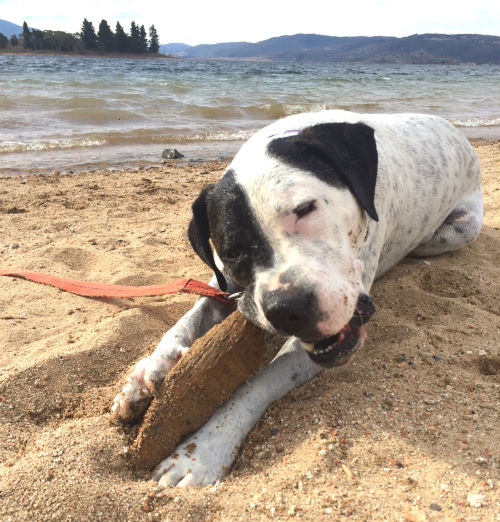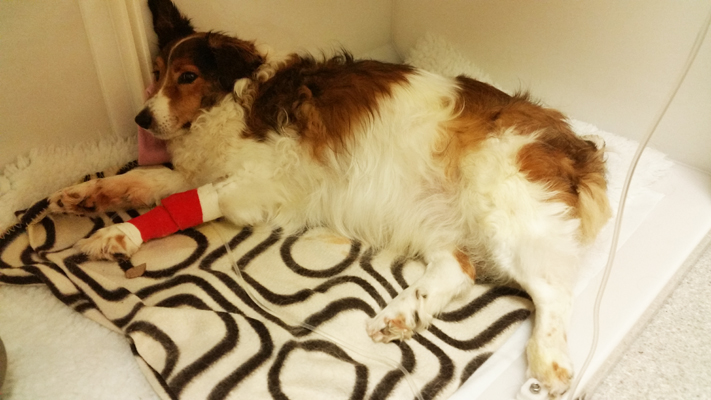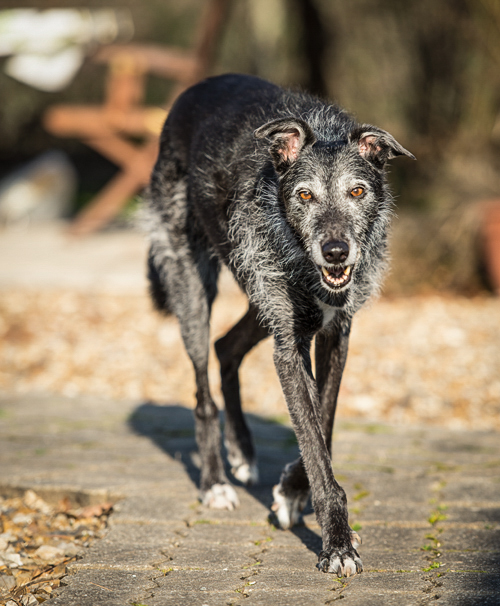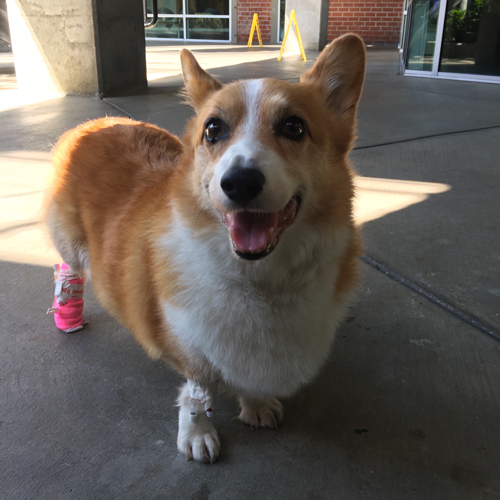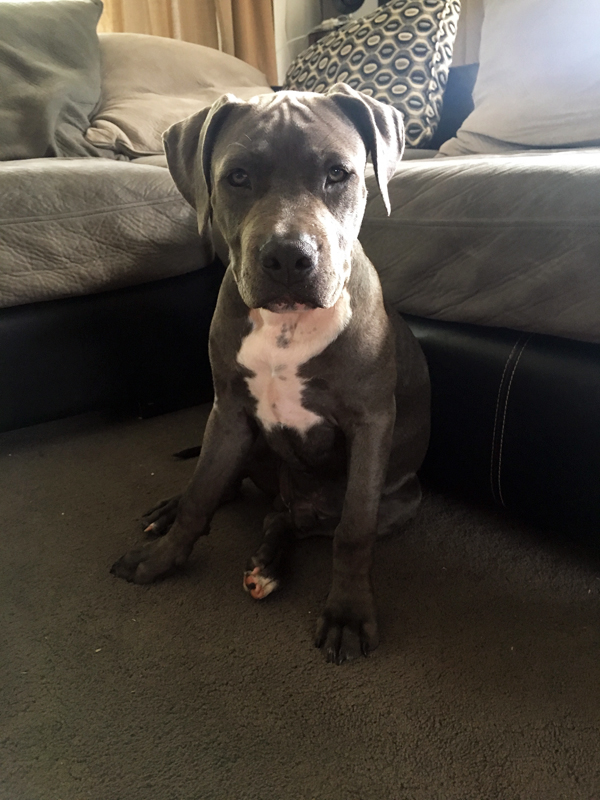- Second Chance AIHA ›
- Forums ›
- AIHA Dog ›
- Do some dogs not respond to treatment for regenerative IMHA
Hello, My 10 year old Cocker Spaniel, Middy was diagnosed with regenerative IMHA on 2/21. We cannot get her above a 23 PCV. She has fluctuated between 19.5 to 23 for over a month. I am pasting all of the details below, and going to search for a way to upload. I have requested a consult with Dr. Dodds but would appreciate any guidance you all can provide!
Thank you!
Darbi & Middy
Middy is currently taking the following. This has not been the dosage from the start, please see notes for additional details:
• Doxycycline: 100mg AM and 25mg PM
• Cyclosporene: 50mg twice a day
• Prednisone: 12.5mg twice a day
• Plavix: 18.75mg at night
• Cerenia: 30mg once a day
• Proin (she has taken this for years)
• Famotadine
PCV History:
02/20= 22% – Brought Middy into our vet as she has seemed tired, had soft stools, and was not as interested in playing ball and going on walks. She threw up her breakfast several hours later. She had a mild temperature, light gums and red tonsils. He took blood for CBC to include tick borne testing.
02/21= 25% – Vet called first thing in AM indicated that Middy needed to go to specialist straight away and that her RBC levels were very low. Went to specialist and she came in with PCV of 25%. They did xrays, ultrasound and blood work. Per vet paperwork (attached) there was a prominent pancreatic node, but the vet felt that this was likely a breed related issue. We started her on the following:
Doxycycline: 100mg AM and 25mg PM until Tick results come in (2/25)
Cyclosporene: 50mg twice a day
Prednisone: 10mg twice a day
Plavix: 18.75mg at night
02/23= 19.5% – Middy threw up her breakfast 70 minutes after eating and then passed out. I held her up and she came around. At her PCV check that day, they prescribed:
Cerenia: 30mg at morning to help with nausea. I was only to do this until she got used to Cycolosporene, however we saw noticeable difference when we stopped (not positive). The vet said we could continue use.
02/24= 23%
02/25= 28% (Doctors believe this is in error) At PCV check they indicated that she tested negative for tick borne and switched her onto Clavamox for some sort of bladder thing that they weren’t real clear about (from her urine test). I was not told she had a bladder infection, yet the paperwork said so. When I questioned this, I was told she did not have one, but that there was something in her urine. It is worth noting that over the summer, Middy had a UTI that would not go away. The first vet that examined her urine told me there were no issues. When my vet returned, he called me immediately because he was unhappy with the PH. He ran another test and found crystals (that sometimes get pushed to the side of the slide so they go unnoticed). We went on a course of roughly 3 different antibiotics over a 1.5 month period of time to get rid of the UTI.
02/26= 20% – Middy seems very lethargic – almost passed out when she got excited to see me.
03/11 – last dose of Clavamox
02/27= 22%
03/02=24%
03/10=22%
03/16=20% (Fasting appointment for full CBC; lab that performed CBC indicated 18%) on 03/17 received report that CBC lab indicates 18% with reticulocyte count of over 580k. They say that we may need to relook dose in a week if no improvement. They would also like to retest at that time for tick borne diseases. I called back and requested that we increase dose that night and retest on 3/20. We increase prednisone from 10mg x2 a day to 12.5mg x2 a day.
03/20 = 23% (Fasting appointment to retest for tick borne) – Middy’s levels are up from 18-20% to 23% – gums are noticeably more pink. She tests “light” positive on Snap test for E-Canis.
03/27=20%
IMPORTANT:
Kidney Values:
• Several years ago, Middy’s kindey levels were slightly elevated. We determined she had pre-kidney issues and have controlled it with a diet of rice, chicken breast, sweet potatoes and supplements from BalanceIT. I believe her values came in good with the initial CBC on 2/21 and maybe slightly more elevated on 3/16 pull.
Allergies:
• Middy suffers from allergies. She went to a dermatologist in November of 2015 and was prescribed allergy shots. She also occasionally took a shot of Zoetis IL 31 – Canine Atopic Dermatitis Immunotherapeutic which blocks IL31 to help prevent the itch.
• In December, we noticed that Middy started itching more after her allergy shots than before and so we reached out to the doctor in February, and he indicated we should give her half doses once a week instead of full doses every other week.
• We never started her shots back up because she wasn’t itching and we didn’t want her to start. Then, she was diagnosed with IMHA.
• The last time she had a shot of Zoetis IL 31 – Canine Atopic Dermatitis Immunotherapeutic was the beginning of November 2016.
• The last time Middy had her regular allergy shot was in January 2017
• We made the vet treating her IMHA aware of this as we were unsure if this could lead to the IMHA?
Other Items of Interest:
• Over the summer, Middy’s Prescapular lymph node was swollen. My vet took several samples and sent away – came back okay (I don’t remember the terminology, but not cancer).
• A new dog was introduced to our family in November – Middy has seemed down since. We attributed a lot of her depression and tiredness to some jealousy.
• Middy has a history of UTI’s. I mentioned in the 2/28 summary some issues she had over the summer. I am not sure, even now if they are fully resolved. My vet has not asked for any additional urine samples.
Welcome Darby and Middy.
I’m so sorry you had to come looking for help because I know that means mum is very worried about you Middy.
First of all, regenerative is the BEST news you can get when diagnosed with this disease.
I note you have contacted Dr Dodds and she is wonderful. Don’t by put off by her sometimes short answers. It is just her style. She doesn’t use a lot of words, so whenever you need to contact her, ask specific questions as much as you can. Once you have her email, if you have any further questions, just email her back.
Unless I’ve missed it, what is Middy’s weight?
One thing that should be added to the drugs is thyroxine. I now Dr Dodds will recommend it too. It helps the marrow to produce red blood cells. I wouldn’t be in the least surprised if once started, you’ll see she starts getting better results.
How are you dosing the drugs. Do you mind listing them again with times. For example, Cyclosprorine should be dosed away from food, prednisone always with food.
Any questions, just yell.
My very best,
Vally
Thank you for the response!
I will definitely try to be specific with Dr. Dodds – your message prompted me to just write her another quick note to let her know that Middy fluctuates between 28 and 29 lbs.
I have been giving her meds twice per day, with food. I asked my vet about the cyclosporine with food and she said it was okay, but now I am not so sure. I do know that you have to be consistent no matter what!.
Middy’s meds are all with food:
7AM
Doxycycline: 100mg
Prednisone: 12.5mg
Cerenia: 30mg once a day
Proin 25mg
Famotadine 5mg
30 minutes later (after Cerenia has kicked in):
Cyclosporene: 50mg
7PM:
Doxycycline: 25mg PM
Cyclosporene: 50mg
Prednisone: 12.5mg
Plavix: 18.75mg at night
Proin 25mg
Famotadine 5mg
I will bring up Thyroxine at Thursday’s appointment.
I don’t know if I mentioned this, but over the last week she has been very alert, pinker gums, wants to play (which we limit)…so the drop from 23 to 20 came as a huge shock! She has been more sleep since – but it is strange how she acts better, looks better and then gets a PCV and instantly seems more tired.
Thank you for the response!
I will definitely try to be specific with Dr. Dodds – your message prompted me to just write her another quick note to let her know that Middy fluctuates between 28 and 29 lbs.
I have been giving her meds twice per day, with food. I asked my vet about giving with food and she said it was okay, but now I am not so sure. I do know that you have to be consistent no matter what!.
Middy’s meds are all with food:
7AM
Doxycycline: 100mg
Prednisone: 12.5mg
Cerenia: 30mg once a day
Proin 25mg
Famotadine 5mg
30 minutes later (after Cerenia has kicked in):
Cyclosporene: 50mg
7PM:
Doxycycline: 25mg PM
Cyclosporene: 50mg
Prednisone: 12.5mg
Plavix: 18.75mg at night
Proin 25mg
Famotadine 5mg
I will bring up Thyroxine at Thursday’s appointment.
I don’t know if I mentioned this, but over the last week she has been very alert, pinker gums, wants to play (which we limit)…so the drop from 23 to 20 came as a huge shock! She has been more sleep since – but it is strange how she acts better, looks better and then gets a PCV and instantly seems more tired.
Vally,
I am trying to respond, but it won’t post – just says duplicate. Giving it another shot.
She weighs between 28-29lbs (it fluctuates)
She currently takes:
7AM:
Doxycycline: 100mg
Prednisone: 12.5mg
Cerenia: 30mg once a day
Proin 25mg
Famotadine 5mg
I give Cyclosporene: 50mg 30 minutes after so that the Cerenia has time to help with nausea
7PM
7AM:
Doxycycline: 25mg
Cyclosporene: 50mg
Prednisone: 12.5mg
Plavix: 18.75mg at night
Proin 25mg
Famotadine 5mg
I hope this posts!
Thank you!
Also, I just really appreciate your response and any advice this forum can offer. I am beside myself with worry. My dogs are like children to me and this is just the most awful disease.
Thank you!
Darbi,
I’ve looked over all the bloodwork and read your descriptions. There are many things going on here, some are related to each other and others are not, and I want to discuss all of them in detail, in the future, but I wanted to highlight my first and biggest concern. Tick disease.
My first comment is that there are NO ” “light” positive on Snap test for E-Canis.” I have belonged to a group called Tick-L since the early 90’s. It is an email group, headed by a scientist, that has been discussing all things canine tick disease for a very long time. The website I am going to link you to several times is a resource developed by a long time member Gil Ash, who is a consummate researcher. She has gathered all of the information we have discussed these many years and put in a website for the public. A great deal of this information comes from a vet that is a consulting member of Tick-L, other information is gathered from professionals in the field of infectiousness veterinary disease. And much of it is what we have read from owners coming to the list for help in these past 30 years. Over the years we have all read some owners report that their vet said it was a “light” positive. Gil, as stubborn as she is, contacted IDEXX directly to ask about this. They confirmed that the test is either positive or negative. Any interpretation of the color is wrong. Change in color indicates infection.
The SNAP 4DX test is a screening test. It provides a yes/no result. It was designed as a screening test to quickly identify if a dog has 4 different tick diseases or heartworm. There are other tests that are used to follow up, after a positive has been found on the SNAP 4DX that have a finer look at “degree” of infection and that are used to determine how successful the treatment is going. But if the SNAP 4 DX is showing a positive for erhlichiosis then Middy has been exposed and is infected with this tick disease.
Go to this page on our website:
https://www.secondchanceaihadogs.com/medical-tests-resources/
Click on SNAP Assay. This opens a paper that explains how this test works. You don’t have to read this, but do look at fig.2 on page 133, this shows images of how the test works. The control spot is a light blue on the lower right and will remain this color throughout the test. The other spot is the part of the test that identifies active infection. They are demonstrating here that it is a darker blue. It doesn’t matter how much darker. These tests were designed to detect any existing disease.
Here is Gil’s website that discusses all things tick disease. I am including a direct link to the page discussing erhlichiosis, please read this carefully.
https://sites.google.com/site/tickbornediseaseindogs/ehrlichiosis
For your quick reference, and for those reading this reply, I am including from that page the significant list of identified signs and symptoms that can be seen in this disease. Of course we understand that any of these can also be identified with other conditions, but I wanted to give you an idea of how cumulative the effects of this disease can have on the body. Some are very serious, including low platelets (clotting problems), neurological signs, kidney disease (glomerulonephritis), bone marrow suppression etc.
intermittent fever
intermittent loss of appetite
lethargy
total loss of appetite
gradual loss of body condition (esp. along the spine and around the eyes)
viral tumors on the face/mouth/muzzle
hemorrhaging even when the blood count looks normal
clotting problems
low or high calcium levels
seizures
muscle wasting
skin infections
neurological signs (repetitive obsessive actions or palsy)
diarrhea
low platelet count
urine too alkaline
vomiting
hyper-reflective eyes
low white blood cell count
anemia
glomerulonephritis
bleeding from nose or eyes
ocular signs
arthritis
weakness
pallor
incontinence
pneumonia
cough
kidney failure
increased thirst and urination
incoordination
neck or back pain
bleeding under the skin or a rash
swelling of the legs or joints
enlarged lymph nodes
irreversible bone marrow suppression
What is good is that your vet decided to be cautious and give doxycycline in case there is tick disease. What is perhaps not so good is that the dose is much lower than recommended by Tick-L. I am guessing Middy’s weight is around 45 lbs. According to Tick-L she should be getting 5mg of doxy per pound of body weight every 12 hours for 8 weeks. That’s about 45lb x 5mg = 225mg doxycycline given every 12 hours for 8 weeks (500mg per day). You are giving 100mg AM and 25mg PM. That’s 125mg a day. This will just “tickle” the disease as we often say, causing it to retreat a bit and then reappear when the coast is clear.
https://sites.google.com/site/tickbornediseaseindogs/treatment
Gil’s message about dosage:
“A semisynthetic tetracycline, doxycycline is the drug of choice for ehrlichiosis (including Anaplasma phagocytophilum and platys), Lyme Disease and Rocky Mountain Spotted Fever.
The dosage we recommend on Tick List is an aggressive one: 5 mg. of doxy per pound of body weight given every 12 hours for 8 weeks. For those who prefer to figure body weight in kilograms, this is approximately the same as 10 mg per kg, the difference being not enough to mention.
This is twice as high as the dose that is generally recommended – and here I should probably remind you that I am not a veterinarian or a medical professional. Well, that’s true. At the same time, I should tell you that your vet is the one to decide what dosage to use. Well, I would concur if your vet is familar with tick-borne disease and knows it inside out. If not, he or she should consult with a colleague who is before deciding on the dosage.
In my opinion and that of everyone on Tick List, to my knowledge, ehrlichiosis and Lyme must be hit hard the first time out, if at all possible, and lower doses and/or shorter treatment times all too often mean recurrence. Unless your dog is one of the few that cannot take doxycycline or take it in this higher dose, my best advice to you is to insist on it. In the experience of a great many of us on Tick-L, each time ehrlichiosis or Lyme recurs, it’s harder to stop or contain it. ”
I truly understand how much information this all is and how overwhelming it seems. I’ve explained this at least 500 times in my life, probably more. Tick disease has existed as a very serious disease for a long time around the world but yet, just like AIHA, many US vets don’t have a complete understanding of all the details like a specialist would. When we were able to convince owners to stand up to their vets and get the proper treatments, the dogs survived. Sadly those vets who were reluctant to help or didn’t even believe there was tick disease, those patients often did not survive.
What can you do? I suggest you ask for a more defined, more accurate test to ensure that the degree of the infection is clearly identified immediately. Tick-L has always recommended ProtaTek labs in AZ. Dr. Holland is an expert and all she does all day, every day, is test for veterinary infectious diseases. Her knowledge of tick disease is amazing.
All the information you need to contact this lab is on this page. The information you want your vet to read and respond to is this: “The link takes you to a page where you can download a Request Form or Dr. Holland’s technical brief on “Canine Ehrlichiosis and Diagnostic Importance of End-Point Titers” You are asking to have the end point titers tested so you can find out the degree of infection.
https://sites.google.com/site/tickbornediseaseindogs/testlaboratories
Dr. Holland has been known to take calls from concerned owners and help them figure out what they should be testing for in their particular area of the country.
Do you have any questions?
My best, patrice
Patrice,
Thank you for this very detailed information. When Middy was first diagnosed, we put her on Doxy for a week until the first blood test came back negative. After several weeks of no major improvements, I started researching more about tick borne diseases and realized 1) they could stay dormant for years – which was very important because Middy DID test positive many years ago and was treated at that time. This is info I shared with the specialist; 2) Middy’s prescapular lymph node was swollen over the summer and she was biopsied and determined that it was not cancerous. 3) I read that they can test negative, especially at the beginning of an attack with they don’t have enough antibodies to test positive. I requested that we be seen the following business day for another tick test and requested, even before we got the test results that we start her back on doxy.
The vet said that the reason the snap test might have been light positive is because of steroids, but I know she has erlichiosis.
Middy weighs between 28-29lbs on any given day, so it appears as though she is under-dosed by approximately 20mg right now. I will bring up dose with the vet on Thursday.
WORTH noting is that they also sent blood away for Babesia testing to NCSU. Would they have checked that blood for Erlichia as well? If not, should I have them send a sample to Dr. Holland? Will her information change treatment plan?
Will increasing Doxy potentially help PCV?
Thank you!!
Darbi & Middy

- This reply was modified 7 years, 9 months ago by Vally.














